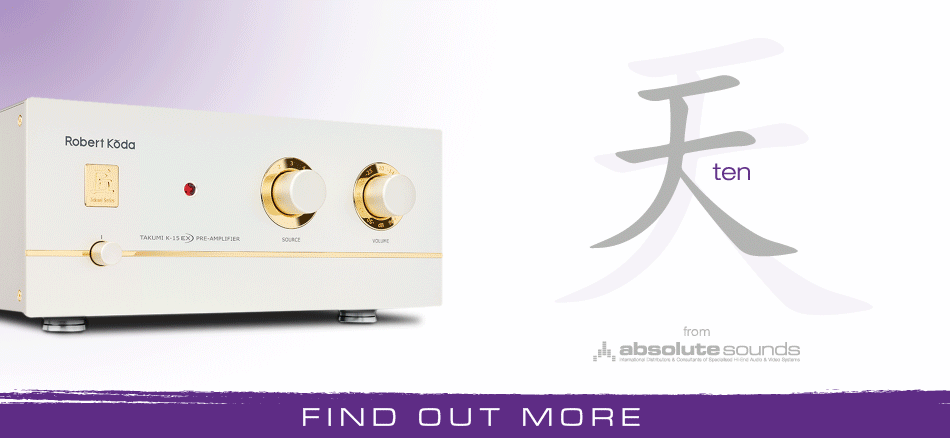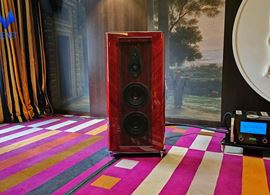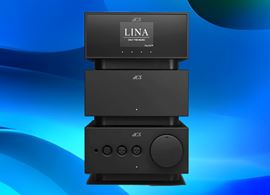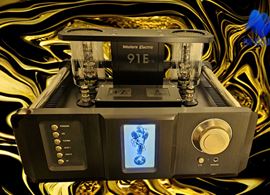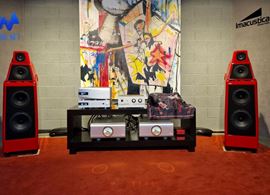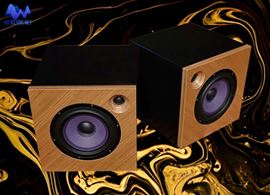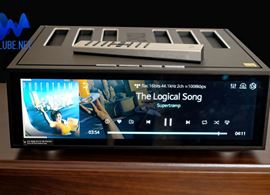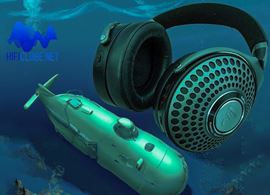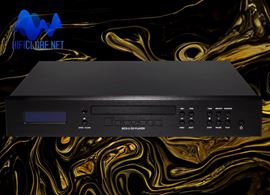
NAGRA VS. KRELL
The most obvious difference remained in the bass. The PMA bass was leaner although it also possessed a strong sense of drive and pace. And yet, one feels that somehow it doesn't offer that same sensation of unlimited power which is the trademark of Krell. Most of the time I refrained myself from pushing the PMAs to the theoretical limits: I could feel the stress creeping in, arguably in the form of a slight audible compression whenever I tried to do that.
The Krell mids seemed to take it easier, supported by the comfortable amounts of power, and consequently sounded relaxed, almost to the point of being laid-back in comparison to the more upfront presentation of the PMAs, which is notwithstanding rather beguiling, I can assure you.
Both the Krell and PMA trebles didn't call the attention to themselves, which is always a good thing, apart from the aforementioned hint of fine grain present in the latter under stressful conditions. For this particular sytem configuration I would (and I did) choose the Krell. But I am ready to admit that with a more benign load under different circumstances others might choose otherwise.

A QUESTION OF AIR
With classical music recorded in natural acoustics, I wasn't surprised to find the «PMA's dryness» was also apparent in the «atmosphere», the «air» surrounding and enveloping the musicians, which made them almost stand out in space with unusual precision and focus, thus allowing one to follow their individual performances whatever the positioning in the soundstage, in the same way that Las Vegas hotels look so distinct and clear in the desert air even when seen from quite a distance. «Krell's air», so to say, had higher levels of humidity, it sounded more of an entity in itself, and you could clearly hear it as the soundstage expanded to engulf the listening room. Paradoxically, the air here also seemed to work as a common «bond», linking the musicians together more like a team than a group of individuals.
A SMILE AT THE FOOT OF THE LADDER
It only then occurred to me that the PMA might just not feel comfortable being driven by the solid state Antipode preamplifier (which is also a prototype, a work in progress designed by João Grácio, a young Portuguese engineer) although the Krell didn't seem to complain too much. So I substituted the lovely Nagra PL-L for the Antipode.
Haven't we all already watched the smile on a child's face when it finally has permission to get out of school and runs happily to its mother's arms? The PL-L put that same glowing smile on the PMA's face. And mine too. It didn't change its character, mind you, neither did it invalidate what was written before. But microdynamics improved, as did all the other sound parameters: citius, altius fortius. Bass got rounder, the «mids» became more tactile, the highs remained vivid yet luscious; the air was still dry, but oh! transparency improved to a level it hurt me for not having anticipated what was so evident: the PMA must have been «tuned» with a little help from the PL-L. Now you could walk into the soundstage like you do «into» a holographic picture after looking attentively at it for a while.They also brought forth aural reminiscences of the excellent C-J ART II, a superb preamplifier ever so slightly darker and more sensuous and refined.
I was privileged enough to be in S. Francisco for the world presentation of the Nagra PL-L (P?) at the Stereophile Show. Since then I have listened to it integrated in many a system at CES, mostly set up by Nagra. But I had never listened to it at my own leisure and pace.
THE PHARAOH'S SOUL
It was as if the PMAs had been waiting for a soul mate to finally be able to reveal their true selves.
The PL-L was the PMA's key to paradise, to the inner world of music as envisaged by Jean-Claude Schlup. The pharaoh's soul hovering inside the pyramid could now finally release itself into the listening room…
Note: The PMAs used in this audition were battered prototypes on tour of the European Hifishows (Milan, Lisbon, Paris, etc). Eventually they will undergo minor changes and refinements prior to their launch at CES 2005 in Vegas. But it is already clear that Nagra is on to something great here.
SPECIFICATIONS
Power: 200W rms into 8 Ohm for 1 or 2 V input (selectable)
Bandwidth: 10 Hz to 70kHz +/- 3dB
Signal to noise ratio: Typically 104 dB measured in ASA A
Size: 38x38x30 cm (14.9x14.9x11.8 inches)
Weight: 10 Kg (22 lbs) each monoblock
Price: +/- 8 000 euro (pair)
Note: PSA, stereo version, 100W, +/-5 000 euro
Availability: early 2005
Distributor for Portugal: AJASOM

